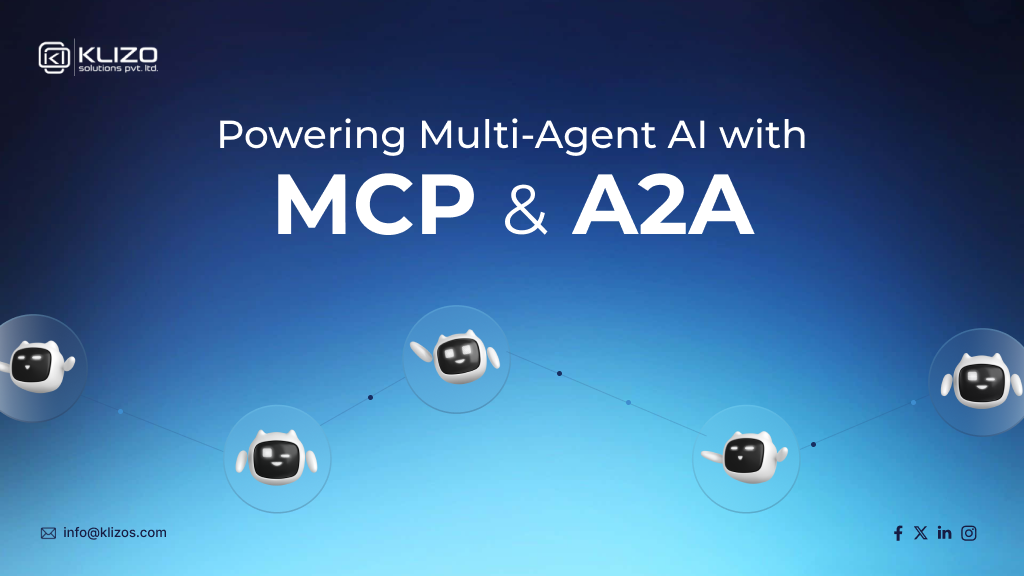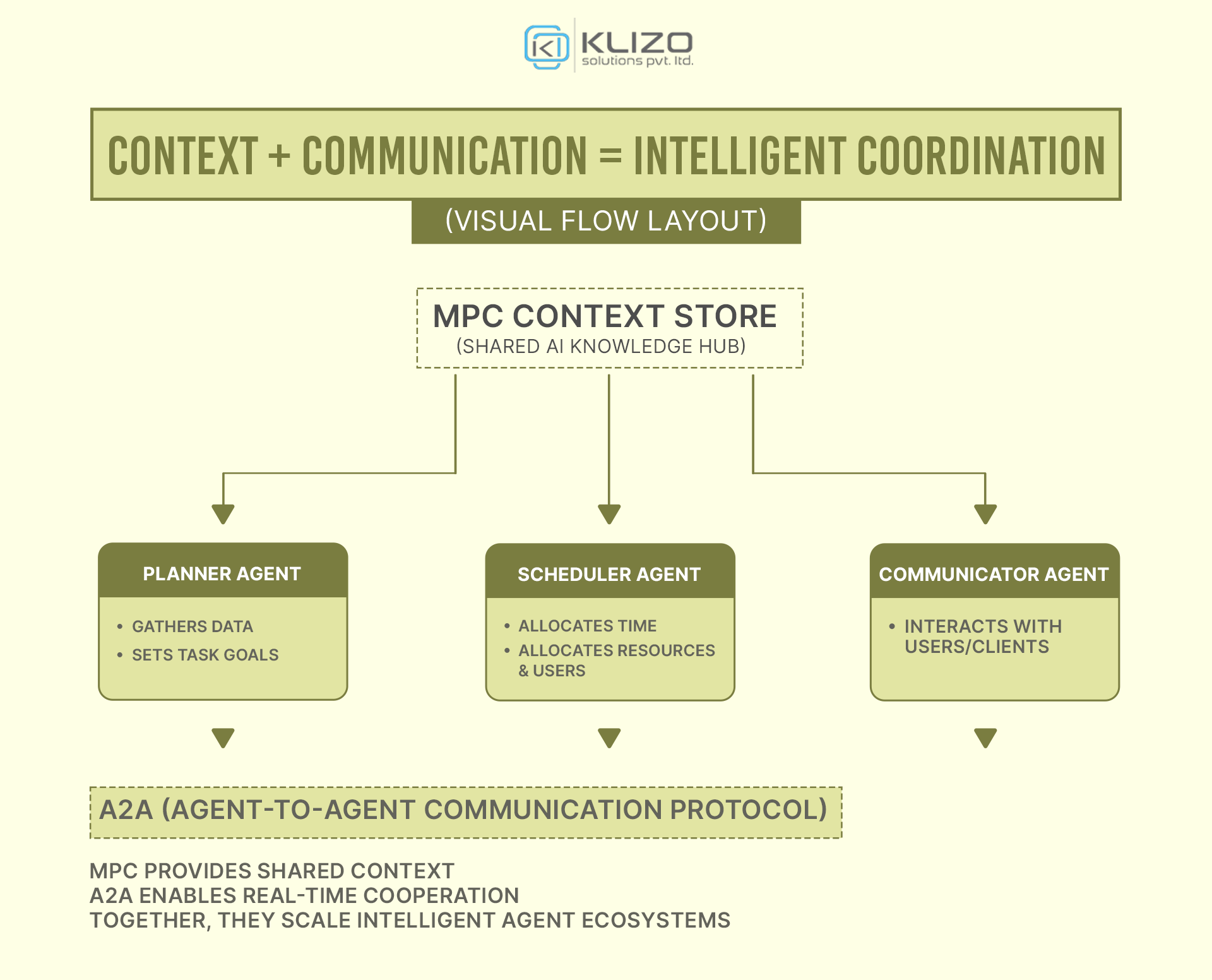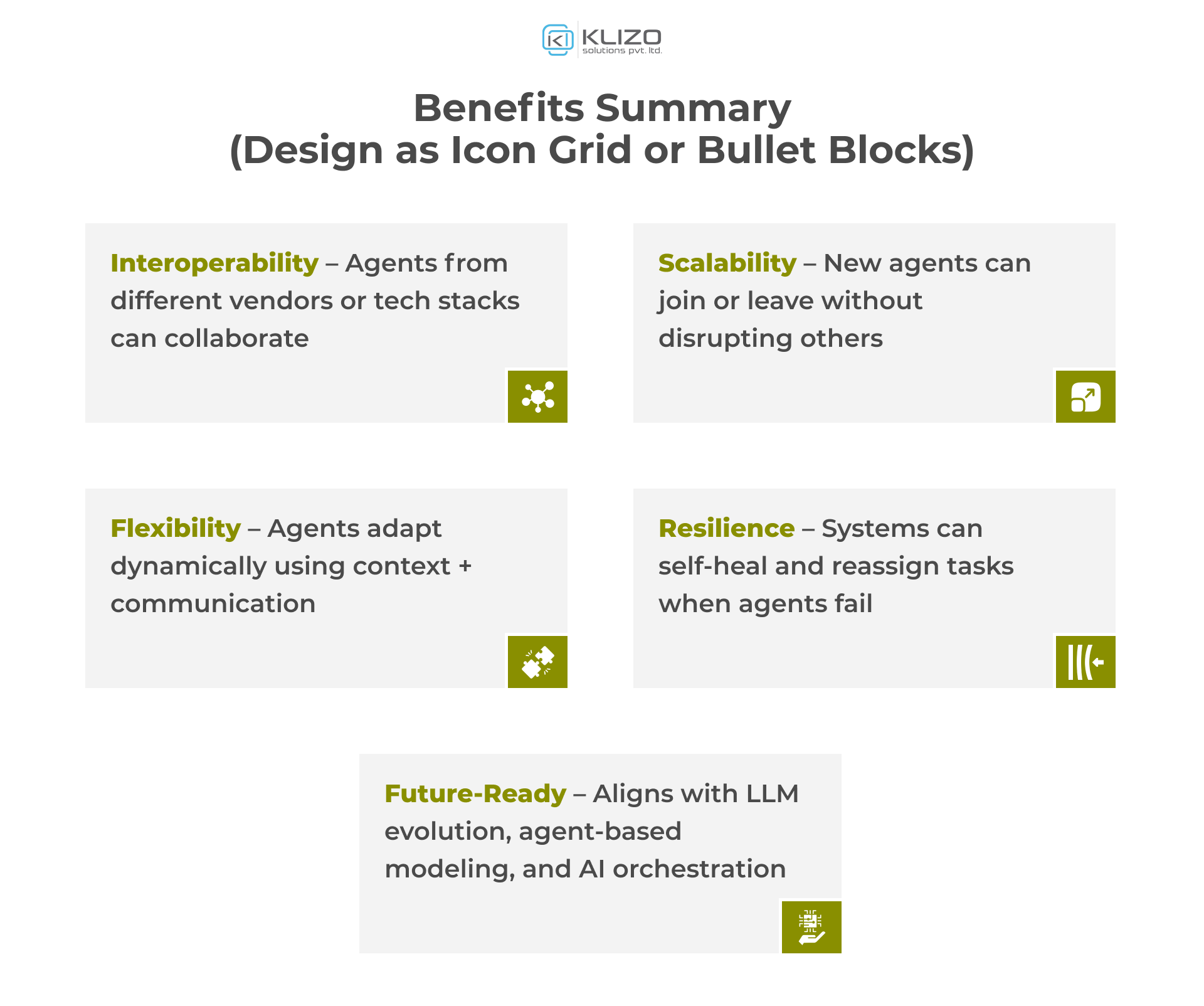


In the fast-evolving world of autonomous AI agents, context and communication are the lifeblood of effective operation. Two critical innovations, Model Context Protocol (MCP) and Agent-to-Agent (A2A) communication, are reshaping how intelligent agents understand their environments, collaborate, and scale within complex systems.
If you’re building multi-agent frameworks, orchestrating autonomous workflows, or experimenting with LLM-driven ecosystems, understanding MCP and A2A is no longer optional; it’s foundational.
MC, or Model Context Protocol, is a standardized mechanism for transmitting, storing, and updating contextual information that informs how an AI agent performs its task. It encapsulates historical data, task goals, user intent, environmental variables, and interaction history, essentially giving AI agents “memory” and “awareness.”
In short, MCP helps AI agents understand the “why” and “how” behind what they’re doing, beyond a single prompt.
A2A stands for Agent-to-Agent communication, a framework where autonomous agents exchange messages, tasks, and context data without requiring human mediation.
A2A allows intelligent agents to coordinate, delegate, and negotiate in real time.

While MCP focuses on what the agent knows, A2A is about how agents talk to each other. When combined, they enable:
Imagine a team of agents planning a logistics operation:
MCP ensures all agents reference the same contextual map. A2A allows them to negotiate timelines, resolve conflicts, and adapt to real-time changes.
| Feature | MCP (Model Context Protocol) | A2A (Agent-to-Agent Communication) |
| Purpose | Share task-relevant context | Enable inter-agent communication |
| Scope | Memory and knowledge sharing | Message and task delegation |
| Role in Ecosystem | Enhances contextual accuracy | Powers distributed coordination |
| Typical Format | JSON context packets, vector embeddings | Messaging protocols (e.g., gRPC, MQTT) |
| Use Case Example | Retain user session context | Route decisions across agents |

MCP and A2A aren’t just buzzwords, they’re foundational protocols enabling the next generation of autonomous AI systems. Whether you’re designing collaborative LLM agents or building scalable AI ecosystems, these technologies are essential for intelligent orchestration.
At Klizos, we specialize in building scalable, agent-powered AI solutions for forward-thinking companies. Whether you’re building an AI co-pilot, multi-agent marketplace, or autonomous workflow, we can help you design, deploy, and scale.
Previous article
Building Scalable Applications with Event Driven Architecture
Joey Ricard
Klizo Solutions was founded by Joseph Ricard, a serial entrepreneur from America who has spent over ten years working in India, developing innovative tech solutions, building good teams, and admirable processes. And today, he has a team of over 50 super-talented people with him and various high-level technologies developed in multiple frameworks to his credit.

Subscribe to our newsletter to get the latest tech updates.